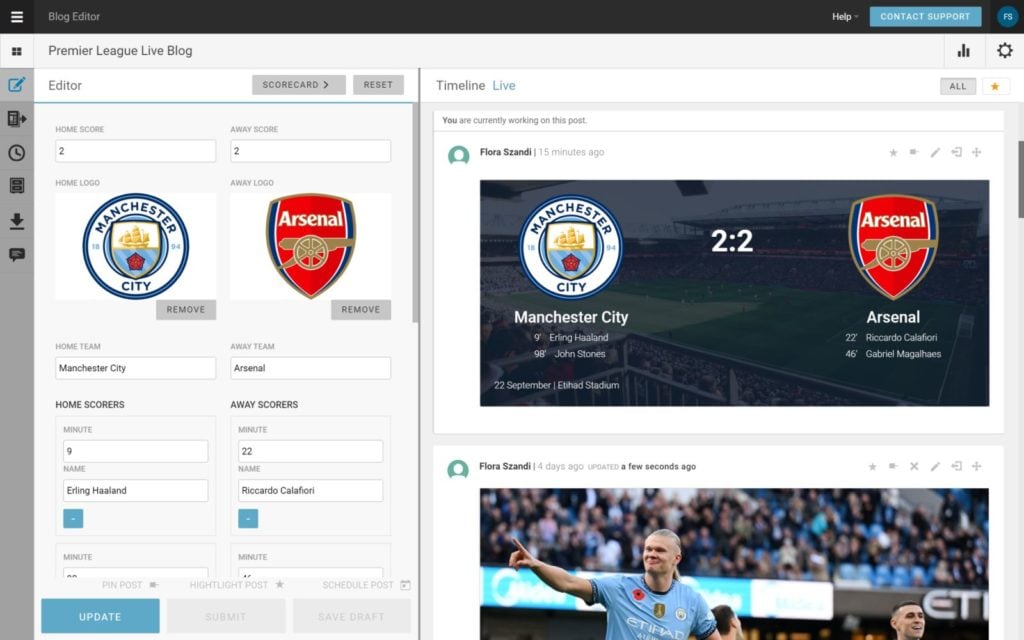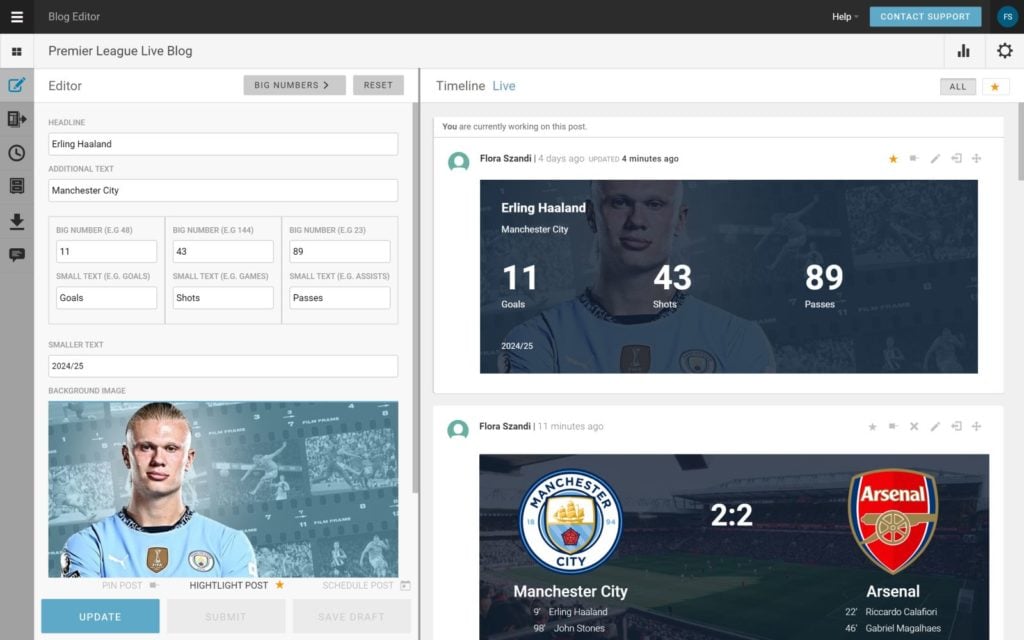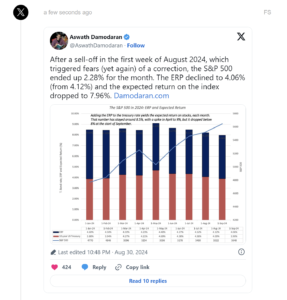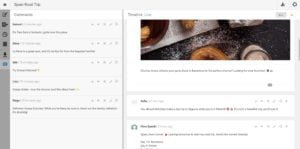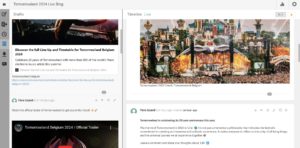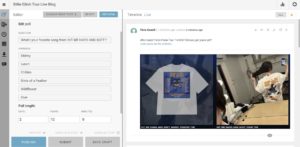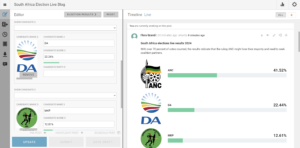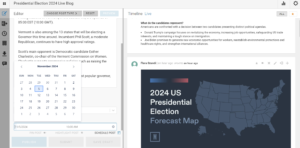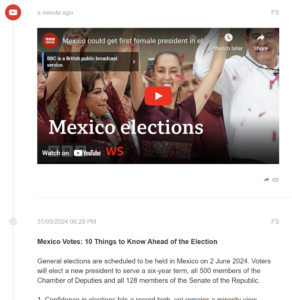By Flora Szandi | June 10, 2025
In today’s interconnected world, audiences often consume content on multiple devices. While watching TV shows, sports events, award shows, and other programmes, many people use their smartphones, tablets, or laptops for a “second-screen” experience.
This article explores how to successfully use live blogging as a second-screen experience to boost interaction and deepen audience engagement.
What Is a Second-Screen Experience?
A second-screen experience refers to the use of an additional device – such as a smartphone or a tablet – while also watching media on a primary screen, mostly television. This method enables viewers to engage actively, explore additional content, look up related information, and join live social conversations, enhancing their overall viewing experience.
The increased use of smartphones is transforming how audiences consume media. According to recent data, 83% of American television viewers use a second device while watching TV, while 65% of viewers use their secondary device to look up information about the content they are watching, or to visit an advertiser’s site.
This presents an opportunity for publishers and broadcasters to engage their audiences in real-time with extra content. With live blogging, there are multiple ways to complement television programmes.
Six Second-Screen Strategies with Live Blog
1. Polls
Polls invite users to instantly react to what they’re watching, turning viewers into active participants. This can be especially effective during key plot twists, sports matches, or debates – situations where opinions are strong and real-time feedback adds to the excitement. Poll results can also help guide discussions and influence future content.
Prepare a poll and ask your audience which player they think will score the next goal during a crucial football match, or get them to guess which film is going to take home the most awards at the Oscars.
2. Live Chat
Integrating a live chat function using Live Blog’s comment feature builds a community around the content, letting viewers share reactions, jokes, and insights in real time. It fosters a social atmosphere even for solo viewers, making them feel part of a shared experience
Start discussions by posting comments about surprising moments, or ask viewers questions to encourage them to share their opinions.
3. Expert Commentary and Insights
Featuring expert insights or exclusive behind-the-scenes content enhances the credibility and depth of what’s being shown on the main screen. Viewers gain additional knowledge or unique perspectives that aren’t available in the primary broadcast. This added layer of value encourages fans to stay engaged across both screens and helps build stronger content loyalty.
4. Background Context
Providing background context – such as character or player histories, brand information, or past events – adds a richer narrative layer for curious viewers. It satisfies the modern audience’s habit of browsing while watching and keeps them engaged on your platform, rather than seeking information elsewhere. This strategy appeals to both casual and dedicated fans by offering varying levels of detail.
5. Statistics
A live statistics feed is especially useful during sports events, meeting the audience’s need for instant data – whether it’s live scores, game analytics, or voting results. Stats also add an analytical dimension to the second-screen experience. When updated continuously, these data help keep the second screen as dynamic and engaging as the main screen, allowing users to follow the action while also accessing real-time information about player performance and other key metrics.
6. Monetisation
Live blogs can open new revenue channels through native or remote ads, sponsored posts, or gated premium content. Because second-screen users are already eager to engage and explore, well-placed offers and links are more likely to convert.


 Image credit: BBC
Image credit: BBC
 Image credit: The New York Times
Image credit: The New York Times
 Image credit: The New Yorker
Image credit: The New Yorker

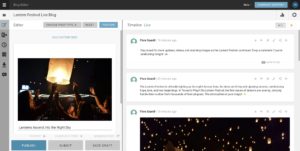


 Present match schedules in your live blog
Present match schedules in your live blog
